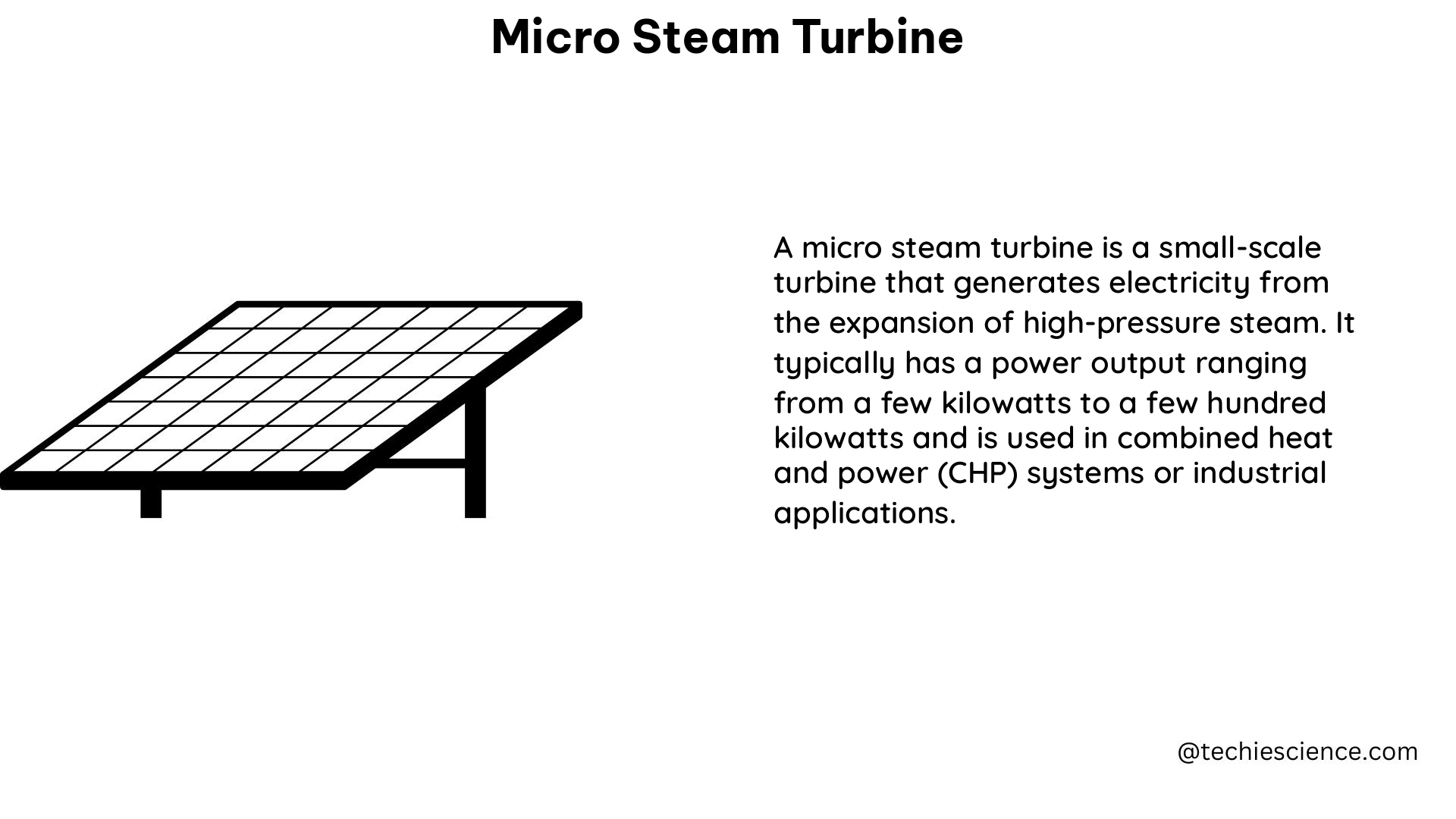Micro steam turbines are compact and efficient devices that convert thermal energy into mechanical power, operating on the same fundamental principles as their larger counterparts. These small-scale turbines offer a range of applications, from residential combined heat and power (CHP) systems to industrial waste heat recovery. In this comprehensive guide, we’ll delve into the technical details, performance characteristics, and considerations for building a micro steam turbine from scratch.
Size and Dimensions
Micro steam turbines are designed to be compact and space-efficient, with dimensions significantly smaller than traditional steam turbines. The RankineCycler™ steam turbine apparatus, for instance, has overall system dimensions of 48.0 inches (122 cm) in length, 30.0 inches (77 cm) in width, and 58.0 inches (148 cm) in height. This compact footprint makes micro steam turbines well-suited for integration into various applications where space is limited.
Power Output and Efficiency

Micro steam turbines can generate power outputs ranging from a few watts to several kilowatts, depending on their design and operating conditions. For example, a micro steam turbine system designed for residential CHP applications can produce up to 3 kW of electrical power and 10 kW of thermal power. The efficiency of these turbines can vary, with a typical micro steam turbine achieving an efficiency of around 10-15%. However, more advanced designs have been known to reach efficiencies of up to 20-25%.
Operating Temperature and Pressure
Compared to larger steam turbines, micro steam turbines operate at lower temperatures and pressures. The RankineCycler™ steam turbine apparatus, for instance, has a boiler temperature of up to 250°C and a boiler pressure of up to 300 psi. This reduced operating envelope allows for the use of less robust and more cost-effective materials in the turbine’s construction.
Flow Rates and Mass Flow Rate
The flow rates of steam and other fluids in a micro steam turbine system can be measured in liters per minute (LPM) or gallons per minute (GPM). The RankineCycler™ steam turbine apparatus, for example, can handle a flow rate of up to 5 LPM. The mass flow rate of the working fluid, on the other hand, can be measured in kilograms per hour (kg/h) or pounds per hour (lb/h). The RankineCycler™ system can accommodate a mass flow rate of up to 2 kg/h.
Noise Levels and Weight
Micro steam turbines are generally quieter than their larger counterparts, with noise levels ranging from 40 to 60 decibels (dB). This makes them more suitable for residential and indoor applications where noise levels are a concern. Additionally, micro steam turbines are lightweight, with some models weighing as little as a few kilograms. For example, a micro steam turbine for residential CHP applications can weigh around 20-30 kg.
DIY Micro Steam Turbine Project
Building a micro steam turbine from scratch requires a high level of technical expertise and knowledge in various fields, including thermodynamics, mechanical engineering, and materials science. While there are resources available online that provide instructions on how to build a micro steam turbine, it is a complex task that should only be attempted by experienced engineers or hobbyists.
One example of a DIY micro steam turbine project can be found in the following video:
This video provides a detailed overview of the construction process for a small-scale micro steam turbine, including the design of the turbine blades, the construction of the turbine housing, and the assembly of the various components. The video also includes measurements and data points for various aspects of the turbine’s performance, such as its power output and efficiency.
It’s important to note that building a micro steam turbine from scratch can be dangerous and may result in injury or damage to property if not done properly. Therefore, it is recommended to seek professional guidance and assistance when attempting a DIY micro steam turbine project.
Conclusion
Micro steam turbines are compact and efficient devices that can generate power outputs ranging from a few watts to several kilowatts. These turbines operate at lower temperatures and pressures compared to traditional steam turbines, allowing for the use of less robust and more cost-effective materials in their construction. While it is possible to build a micro steam turbine from scratch, it requires a high level of technical expertise and knowledge, and should only be attempted by experienced engineers or hobbyists. By understanding the technical details and performance characteristics of micro steam turbines, you can better evaluate their potential applications and make informed decisions about their use.
References:
– https://www.turbinetechnologies.com/Portals/0/pdfs/RankineCycler_tech_sheets/Ohio-Northern-University-Lab50A14.pdf
– https://www.microturbinecenter.com/micro-steam-turbine/
– https://www.youtube.com/watch?v=34jK2-aQ0lM

The lambdageeks.com Core SME Team is a group of experienced subject matter experts from diverse scientific and technical fields including Physics, Chemistry, Technology,Electronics & Electrical Engineering, Automotive, Mechanical Engineering. Our team collaborates to create high-quality, well-researched articles on a wide range of science and technology topics for the lambdageeks.com website.
All Our Senior SME are having more than 7 Years of experience in the respective fields . They are either Working Industry Professionals or assocaited With different Universities. Refer Our Authors Page to get to know About our Core SMEs.